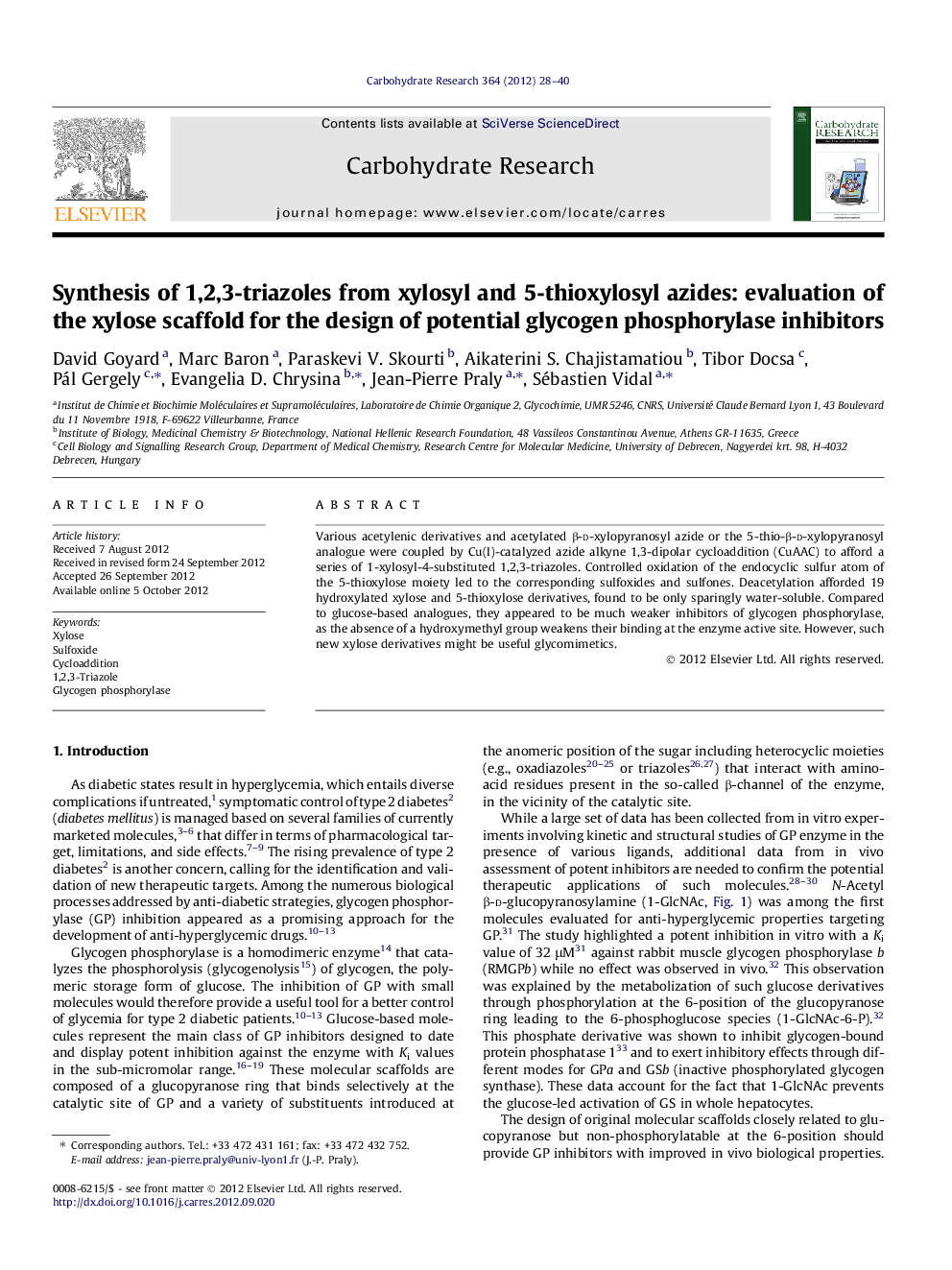| کد مقاله | کد نشریه | سال انتشار | مقاله انگلیسی | نسخه تمام متن |
|---|---|---|---|---|
| 1388118 | 1500887 | 2012 | 13 صفحه PDF | دانلود رایگان |

Various acetylenic derivatives and acetylated β-d-xylopyranosyl azide or the 5-thio-β-d-xylopyranosyl analogue were coupled by Cu(I)-catalyzed azide alkyne 1,3-dipolar cycloaddition (CuAAC) to afford a series of 1-xylosyl-4-substituted 1,2,3-triazoles. Controlled oxidation of the endocyclic sulfur atom of the 5-thioxylose moiety led to the corresponding sulfoxides and sulfones. Deacetylation afforded 19 hydroxylated xylose and 5-thioxylose derivatives, found to be only sparingly water-soluble. Compared to glucose-based analogues, they appeared to be much weaker inhibitors of glycogen phosphorylase, as the absence of a hydroxymethyl group weakens their binding at the enzyme active site. However, such new xylose derivatives might be useful glycomimetics.
Figure optionsDownload as PowerPoint slideHighlights
► Synthesis of three families of xylose-, and thioxylose-based triazoles by CuAAC cycloaddition.
► Oxidation of 5-thioxylose derivatives to sulfoxides and sulfones.
► Kinetic studies with 19 O-unprotected molecules showing no or poor inhibition of glycogene phosphorylase (GP).
► Discussion about the choice of the xylose scaffold (advantages and limitations) for GP inhibition.
Journal: Carbohydrate Research - Volume 364, 15 December 2012, Pages 28–40